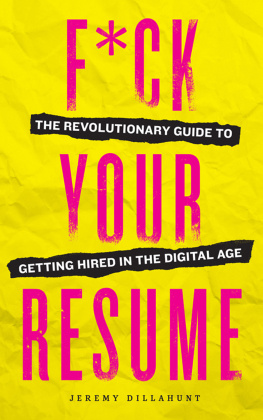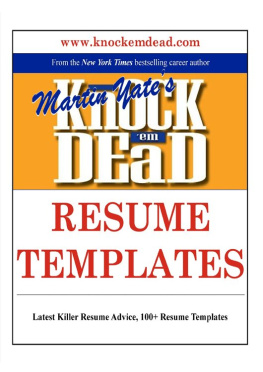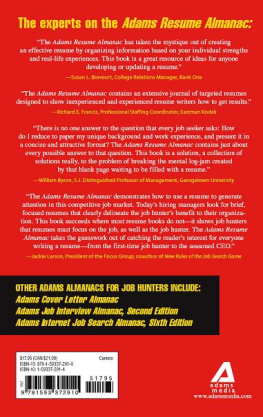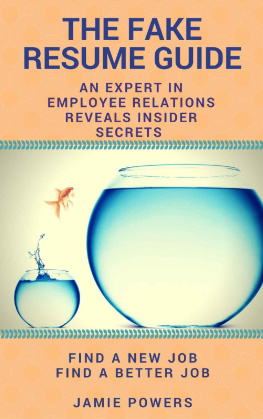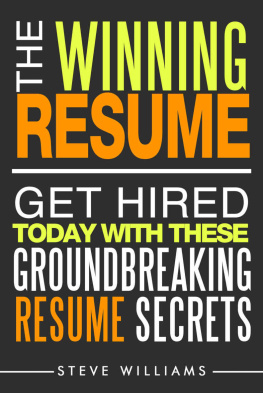Copyright 2016 by Jeremy Dillahunt
No part of this publication may be reproduced, stored in a retrieval system or transmitted in any form or by any means, electronic, mechanical, photocopying, recording, scanning or otherwise, except as permitted under Section 107 or 108 of the 1976 United States Copyright Act, without the prior written permission of the publisher. Requests to the publisher for permission should be addressed to the Permissions Department, Sonoma Press, 918 Parker St., Suite A-12, Berkeley, CA 94710.
Limit of Liability/Disclaimer of Warranty: The publisher and the author make no representations or warranties with respect to the accuracy or completeness of the contents of this work and specifically disclaim all warranties, including without limitation warranties of fitness for a particular purpose. No warranty may be created or extended by sales or promotional materials. The advice and strategies contained herein may not be suitable for every situation. This work is sold with the understanding that the publisher is not engaged in rendering medical, legal or other professional advice or services. If professional assistance is required, the services of a competent professional person should be sought. Neither the publisher nor the author shall be liable for damages arising herefrom. The fact that an individual, organization or website is referred to in this work as a citation and/or potential source of further information does not mean that the author or the publisher endorses the information the individual, organization or website may provide or recommendations they/it may make. Further, readers should be aware that Internet websites listed in this work may have changed or disappeared between when this work was written and when it is read.
For general information on our other products and services or to obtain technical support, please contact our Customer Care Department within the United States at (866) 744-2665, or outside the United States at (510) 253-0500.
Sonoma Press publishes its books in a variety of electronic and print formats. Some content that appears in print may not be available in electronic books, and vice versa.
TRADEMARKS: Sonoma Press and the Sonoma Press logo are trademarks or registered trademarks of Arcas Publishing, a Callisto Media Inc. company and/or its affiliates, in the United States and other countries, and may not be used without written permission. All other trademarks are the property of their respective owners. Sonoma Press is not associated with any product or vendor mentioned in this book.
Photo credits: Cartoonresource/shutterstock
ISBN: Print 978-1-94345-124-1 | eBook 978-1-94345-125-8
CONTENTS
INTRODUCTION
SERIOUSLY, FUCK YOUR RESUME.Type books about finding a job into Amazons search bar, and youll find more than 4,000 results. The common trope is to begin by saying its a whole new world out there, that the Internet changed everything, and that the old rules no longer apply. But despite the new landscape, people still use the same old map, rehashing job-getting strategies that are frozen in amber. Network, be confident, stand out, find your purpose, and, of course, update your fucking resume. Even the best-selling guides fall prey to the same old formulawhether theyre updated for Web 2.0 or not.
If it really is a whole new world out there, then why are job experts paying little more than lip service to the most transformational evolution of the job market since the industrial revolution? Stuffing a single chapter on the Internet into tomes filled with 40-year-old advice is a bit like putting a new stereo into a busted-out Oldsmobileyeah, theres something new inside, but its not going to get you anywhere.
The Internet really has changed the landscape of recruiting and job seekingand not in a way that any afterthought can clarify. In this book, well take a deep dive into how the game of getting hired has changed, as well as how you can use these changes to your advantage. Getting a job is no longer about having a shiny resumebecause everyone already has that. Its about carefully cultivating a professional online presence. Its about being a true professional, online and off. Its about making the right connections. Do this, and jobs will more than likely come to you. And even if they donteven if you find yourself having to send out applicationsall the tools and info you need to pitch yourself as the ideal candidate will be right there at your fingertips.
New Landscape, New Rules
The first thing to understand is that hiring has become a numbers game. There are just too many job openings, new hires, and people on the hunt for it to be anything else.
According to the Bureau of Labor Statistics, there are, on average, nearly 15,000 job openings per day in the United States, or more than five million job opportunities per year. As with many other economies of scale, hiring has developed efficiencies, a.k.a. software, to help manage a huge volume of work while bringing costs down. Software programs dont need sleep, dont take breaks, dont ask for raises, and cost whatever going rate the electricity companies are chargingplus Rackspace and licensing fees. In the same amount of time a human can pick up one resume, browse it for relevance, and decide whether to round file it or pass it along, a software program can do the same for hundreds.
All of this is to say that the numbers are not exactly in your favor.
Thick, stock, paper resumes and gimmicks to draw attention to yourself may have worked in the past, but a computer program doesnt care how clever you are or how nicely formatted your bulleted list might be. Rather than cast your lot with folks offering pre-Internet advice, youre better off getting a handle on how todays process works, what rules the software programs that comb over your application are triggered by, and why the hiring managers of companies big and small make the decisions they do. Once you know the rules of the game, youll be much better suited to play itand to make it through a process designed to filter out ill-suited applicants before identifying the good ones. The real business of getting hired increasingly takes place inside computer programs and behind the closed doors of personal referrals.
To thrive in this new landscape, youll need to reorient your focus toward the evolving, digitized version of yourself that is accessible 24 hours a day, 7 days a week, 365 days a year: online you.
The Best You You Can Be
With the rise of LinkedIn and other online services, the people doing the hiring have a veritable ocean of informationabout you and about anyone else that may be a good candidatejust a few keystrokes away. Think of it this way: A resume is a one-dimensional, black-and-white distillation of all the stuff youve done. Your online profile, in contrast, is a full-color, multimedia, high-definition version of youyour personality, job history, sense of humor, physical description, preferences, personal history, and creative and philanthropic exploits. A resume doesnt stand a fighting chance.

